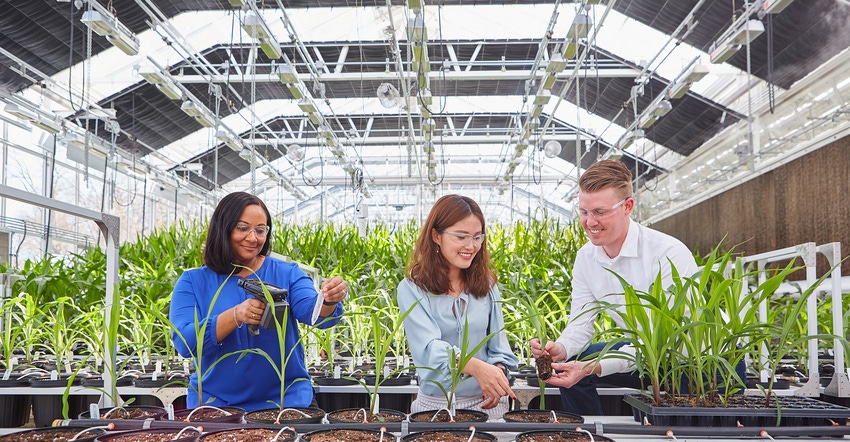
Innovation is a team sport, said Bob Reiter, head of research and development for Bayer Crop Science. So, this large agriculture company partners with small startups to revolutionize the future of farming.
“Open innovations I think are really key if agriculture is going to have a future that is highly sustainable, and supportive of the goals and objectives of farmers and the planet,” Reiter said during a recent Bayer Future of Farming Dialogue.
The company focuses a great deal of its investment and spending in agriculture, about $2.3 billion euros, but Reiter said Bayer cannot be the sole inventors in this space. So, the company is creating an “ecosystem of innovation.”
Player buy-in
Several small companies currently work in partnership with Bayer to advance new technology for farmers. They all have one thing in common — the desire to work with a major corporation such as Bayer.
Pairwise, whose headquarters is in Durham, N.C., focuses on gene editing and plant breeding to improve crops. It was started by Monsanto Growth Ventures, which is now part of Leaps by Bayer.
The company set up a relationship with Bayer Crop Science to further develop the technology, using it in corn, soybeans, wheat, canola and cotton, said Tom Adams, Pairwise CEO and co-founder. “We got access not just to capital to do the work, but really technology and expertise,” he explained. “And with them, we've put together, I think, the deepest, broadest gene editing there is in food and agriculture.”
For Michael Ott, founder of Iowa-based Rantizo, linking arms with Bayer provided one aspect to his drone spraying system he did not have — extensive on-farm data.
“You've got to work with the imagery company. You've got to work with the chemical company. You've got to understand what the farmers need,” Ott explained. “In every one of those steps, it requires an openness and ability to share data and ability to learn, and really do what's best for the system and find your role in there.”
But it is not simply Bayer providing capital or expertise that helps these new players find success. There needs to be a buy-in by the large corporate owners as well.
Company benefits
Not every small company knocking on Bayer’s door will become a working partner. Reiter said there needs to be a benefit for both sides.
With a company such as Rantizo, Reiter pointed to it as a natural extension of Bayer and where he sees the business going. “As a purveyor of crop protection products for farmers, we want to help those farmers use those products in better ways, get more value out of them,” he said.
Since Bayer does not have any drone or hardware expertise, they rely on Rantizo to develop it and collaborate on how to best deliver ag chemicals through this precision application. The small startup will be vital to identifying crop protection formulation and application rates geared toward drone spraying. “To me,” Reiter said, “it's a perfect match.”
Bayer also finds an ally in Oerth Bio, one of its Leaps by Bayer program partners.
John Dombrosky wants targeted protein degraders to be the standard for developing crop protection in the future. “We were able to progress as an early-stage startup by working with Bayer,” the Oerth Bio CEO explained, “but it didn't have to work that way.”
Dombrosky said that often when a small company works with a larger one, the progression is slowed down. Sometimes, he added, goals and directives “get bogged down, get confused and get lost in the mix.” Instead, Oerth Bio moved at a faster pace and credits Bayer.
“This is unlike anything I've experienced before,” Dombrosky said. There has been wide-open communication with both companies establishing what he called “huge levels of trust.” The two have discussions on creating new targets or adjusting old ones. They also foster transparency by sharing resources.
Reiter said this is the teamwork he talks about. “This model should feel like an extension of our core of what we do,” he explained. The Bayer model, Reiter added, pushes exploration into spaces that his large company “couldn't do very well on our own,” all while helping build smaller companies for future success.
About the Author(s)
You May Also Like






